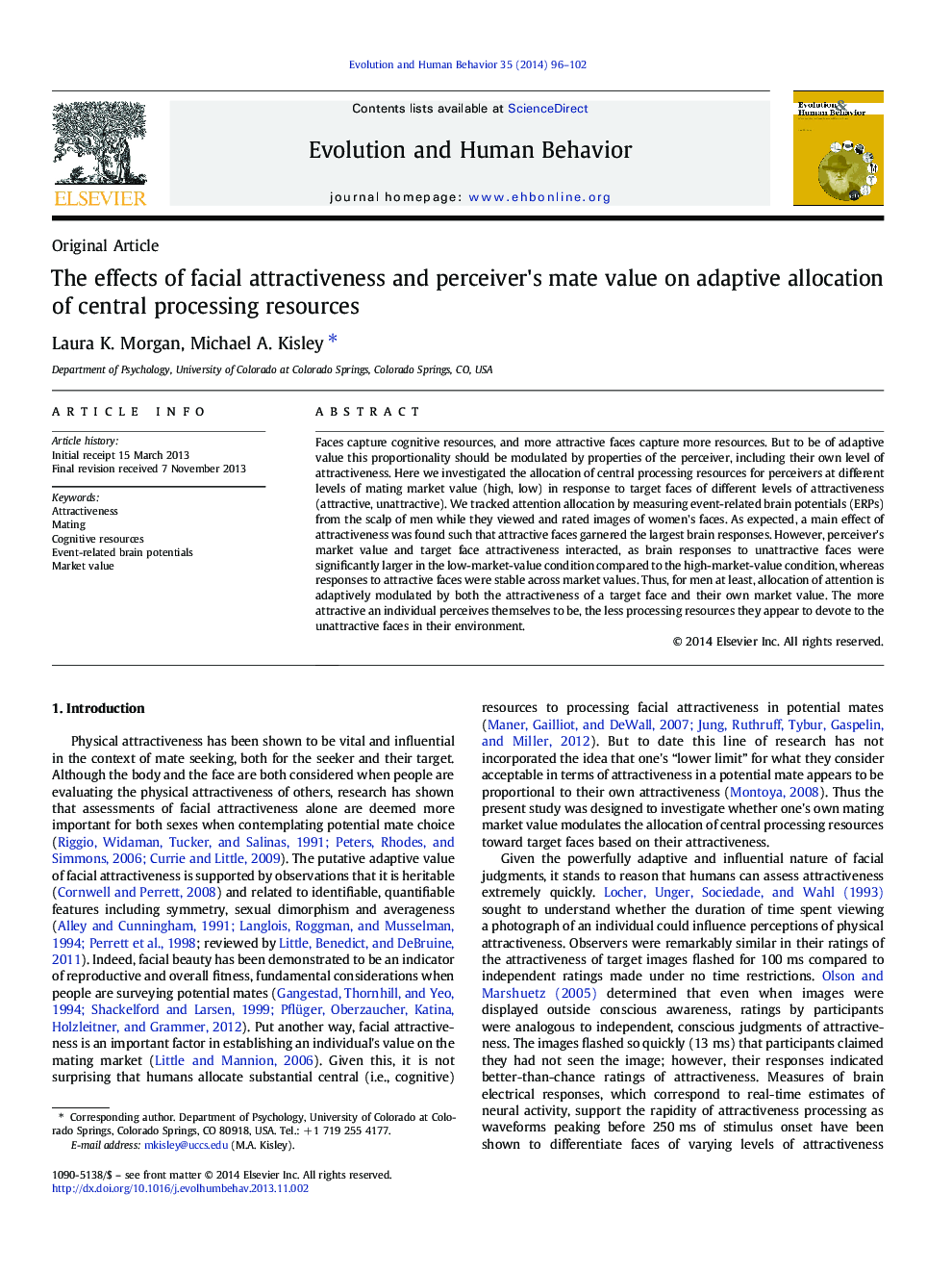| Article ID | Journal | Published Year | Pages | File Type |
|---|---|---|---|---|
| 10464049 | Evolution and Human Behavior | 2014 | 7 Pages |
Abstract
Faces capture cognitive resources, and more attractive faces capture more resources. But to be of adaptive value this proportionality should be modulated by properties of the perceiver, including their own level of attractiveness. Here we investigated the allocation of central processing resources for perceivers at different levels of mating market value (high, low) in response to target faces of different levels of attractiveness (attractive, unattractive). We tracked attention allocation by measuring event-related brain potentials (ERPs) from the scalp of men while they viewed and rated images of women's faces. As expected, a main effect of attractiveness was found such that attractive faces garnered the largest brain responses. However, perceiver's market value and target face attractiveness interacted, as brain responses to unattractive faces were significantly larger in the low-market-value condition compared to the high-market-value condition, whereas responses to attractive faces were stable across market values. Thus, for men at least, allocation of attention is adaptively modulated by both the attractiveness of a target face and their own market value. The more attractive an individual perceives themselves to be, the less processing resources they appear to devote to the unattractive faces in their environment.
Related Topics
Life Sciences
Agricultural and Biological Sciences
Ecology, Evolution, Behavior and Systematics
Authors
Laura K. Morgan, Michael A. Kisley,
